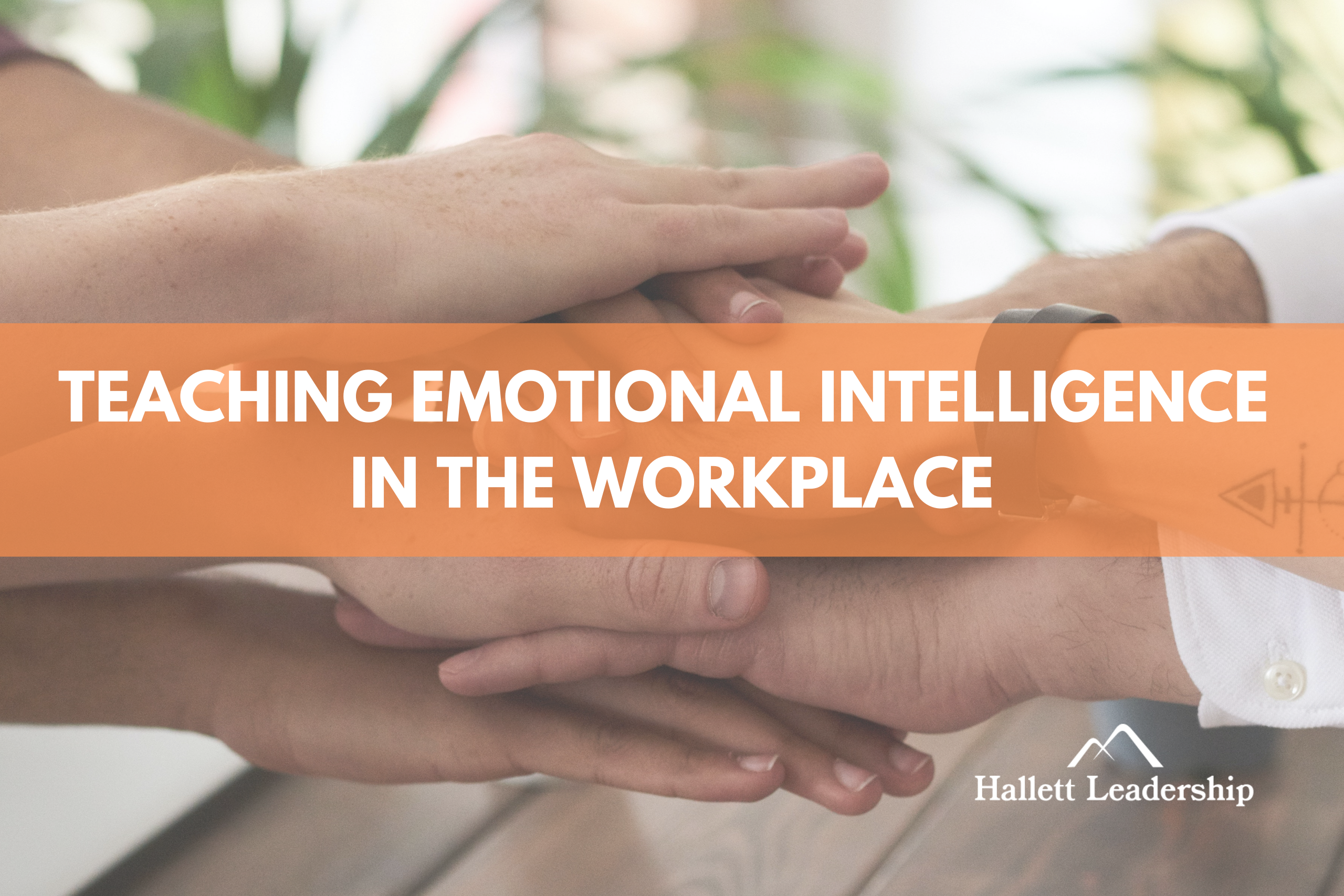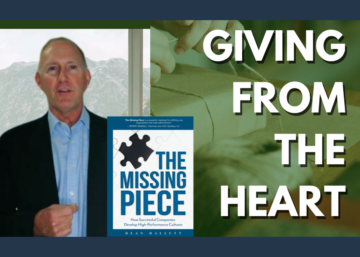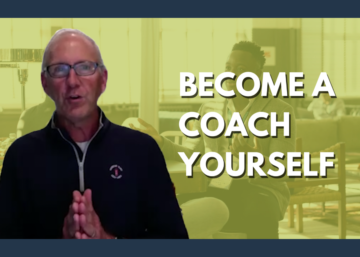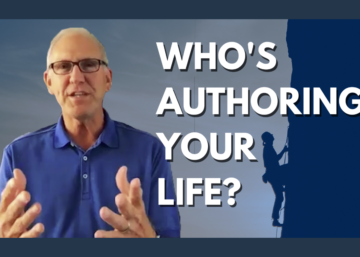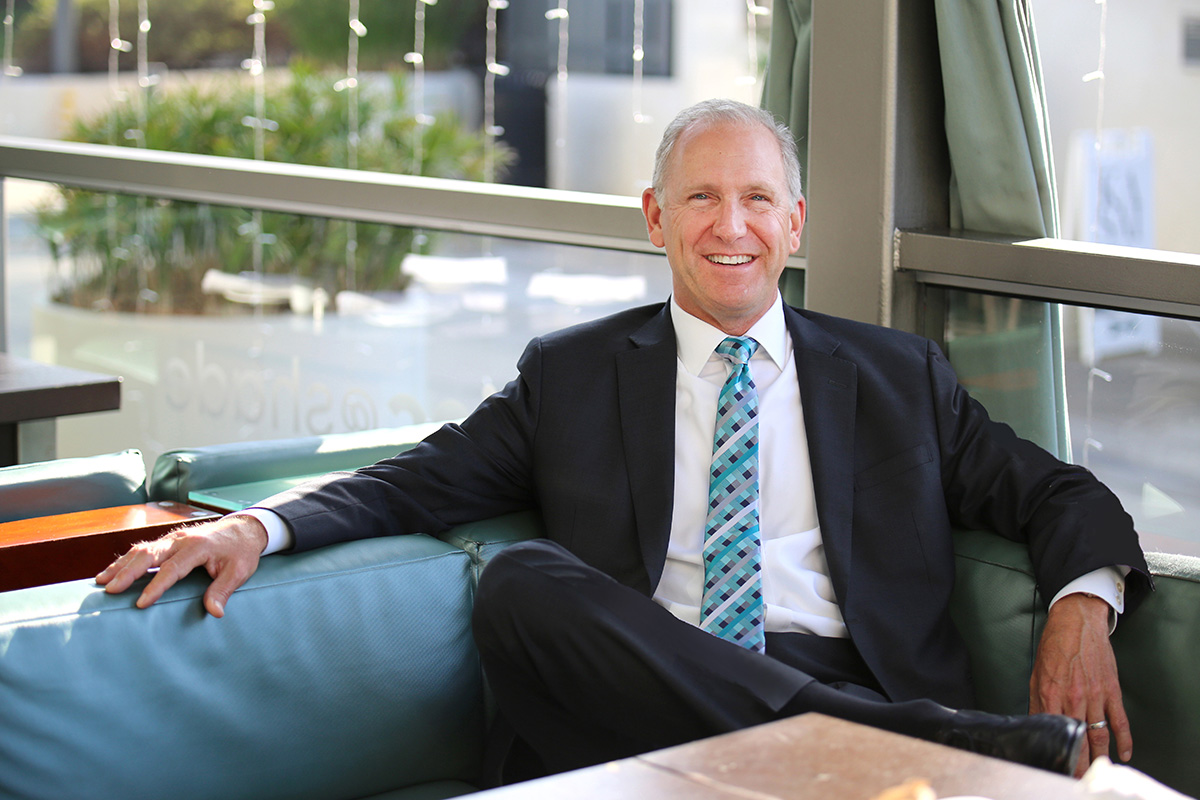We were asked not too long ago how to teach emotional intelligence in the workplace. For starters, we responded that the words “teach” or “train” may not be the best words to use with regard to emotional intelligence. They presume that something is being installed into a person from the outside. Instead, we like to think of “drawing out” emotional intelligence from clients and workshop participants, because the capacity for emotional intelligence already resides in each person.
Many presume that certain people come hard-wired with better, or worse, emotional intelligence relative to the average person. While all of us come with a baseline operating system and go-to behavioral style, we at Hallett Leadership know from experience that emotional intelligence can be intentionally developed, and that anyone who engages in the process of developing it can benefit in their lives and careers.
Here is a simple and practical framework for how to develop emotional intelligence in the workplace.
Emotional Intelligence As Choosing How To Respond
Emotional Intelligence is a very nuanced and advanced topic. Many books and articles have been written on the subject. So in order to keep things simple, we are going to orient this discussion around a simple working definition of emotional intelligence.
The ability to choose how to respond.
For example, a person with well-developed emotional intelligence could find themselves in a stressful situation and experience the urge to react negatively, or in a way that does not contribute to solving the problem at hand. At that stressful moment, such a person would be able to retain their ability to choose how to respond constructively to the situation, instead of just reacting in the moment.
This ability to regulate one’s own nervous system and retain the capacity to choose how to respond to a given situation, will serve as our working definition of emotional intelligence for this article.
To clarify the example above, this person might feel anger or overwhelm, and feel like yelling at someone. With the ability to choose and keep the bigger picture in view, this person might choose instead to communicate with the person, and get on the same page with them about how to address the situation at hand, together. Instead of yelling at that person or reprimanding them, this person would find a way to collaborate in order to move forward.
How does one develop this core emotional intelligence ability of choosing how to respond in a stressful situation?
By choosing in advance how one wants to be, no matter what, in any circumstances.
Developing Emotional Intelligence Begins With Choosing How You Would Like To Be
Here at Hallett Leadership we engage the BE-DO-HAVE model in coaching sessions and leadership programming. It is another simple and potent framework for setting individuals on a course to becoming highly effective, collaborative servant-leaders.
Our society’s default approach to achievement is DO-HAVE-BE, which means if one desires something they have to get busy DOING the work, in order to HAVE the thing they desire, and then they can BE proud, happy, satisfied, content, etc.
The DO-HAVE-BE model is not reliable. How many people do you know that work hard, get the things they want, and are still not happy?
The BE-DO-HAVE model is a successful model for any undertaking precisely because the aspirant doesn’t need to wait for the final accomplishment to define who they are or to attain the state of being they desire.
The developing leader begins with BEING, instead of waiting upon the achievement of their goals to lead to BEING who or how they want to be. Here, what used to be the final goal becomes the starting point.
BE-DO-HAVE
For starters, having and expressing emotional intelligence starts with BEING. Developing leaders must be able to be present in the moment, and fully show up and listen to their peers.
Not only does this mode of being result in greater levels of ease, enjoyment and well-being, it is also a useful problem solving and creativity tool. Instead of engaging some out-of-the-box approach, or prescribing some predetermined methodology, the developing leader has a powerful option to be present in the moment and see where the moment leads the team.
Developing An Affirmation
The developing leader is learning how to be fully present in the current moment, fully engaged. What can this developing leader rely on to continue growing emotional intelligence?
We encourage developing leaders to formulate an affirmation that powerfully describes who they are/aspire to be as leaders. These affirmations are a tool, a reminder, for these leaders to bring forward the best versions of themselves in the moment. The more these leaders show up consistent with their affirmations, the more they will grow and achieve mastery of their true leader within.
I developed such an affirmation of my own, early in my career, and it served as a true north star throughout my journey. Over time, I embraced more and more the leader embodied in my affirmation.
I am a powerful, compassionate, and open leader.
Words on paper are one thing: the purpose of an affirmation is to repeat it, embrace it, and embody it daily so that it becomes your default in the heat and rush of the workday.
Take for example a very process-driven person who tends not to show much emotion, and who tends to withdraw from difficult conversations. This person has also received feedback that since they were promoted to manager, their perceived lack of communication is negatively impacting the department.
In this example, the developing leader’s affirmation might be something like: “I am an engaging, forthright communicator.”
Then, when he’s in a difficult conversation, the affirmation triggers a proactive response. He envisions the best version of who he is as a leader as he embraces and embodies his affirmation.
Coming up with the right affirmation doesn’t happen overnight. It is a process that invites reflection, and may require some tweaking and refining.
In Hallett Leadership’s Accelerated Leadership Program, I challenge participants to come up with an affirmation that can become their north star in life and business.
Create A Safe & Open Environment For Practicing New Ways Of Being
Changing our way of BEING is no small matter. It requires commitment, dedication, repeated practice, humility, and even courage.
Therefore, it stands to reason that it isn’t possible to just tell someone to BE different from their current habitual way of being.
Developing something new requires practice.
So create a safe and open environment where your developing leaders can practice embodying and expressing their new ways of being.
When working with companies, we dedicate time for these leaders to come together and practice the basic moves of their new ways of being. They learn to embrace the best version of their leader within. They learn to stand before a group of people and speak extemporaneously as they embody who they are as a leader. They learn, as that leader, how to give and receive constructive feedback with their peers to support each other in being authentic leaders.
In the safe and open environment we create, developing leaders connect with and express their authentic selves.
Awareness plus practice can lead to the development of a new habit, or a new way of being.
The affirmation then reinforces the developing leader’s awareness, and the new behavior, or way of being becomes more integrated with what they do every day.
Engage A Coach Or Mentor For Input And Feedback
In the process of developing emotional intelligence through the BE-DO-HAVE model, and practicing new ways of being through full presence in the moment, authentic interaction, and affirmation, it is useful to have a coach or mentor. This person has an important responsibility to support the growth of the client/executive by providing input and feedback. Their job is to support the emergence of that person’s inner authentic leader and emotional intelligence.
Conclusion
We trust that having read this article, you are going back into your day with a better sense of how to develop emotional intelligence in the workplace. Please get in touch with us when you or your organization are intent on developing authentic leaders and stakeholders at every level of your organization.
